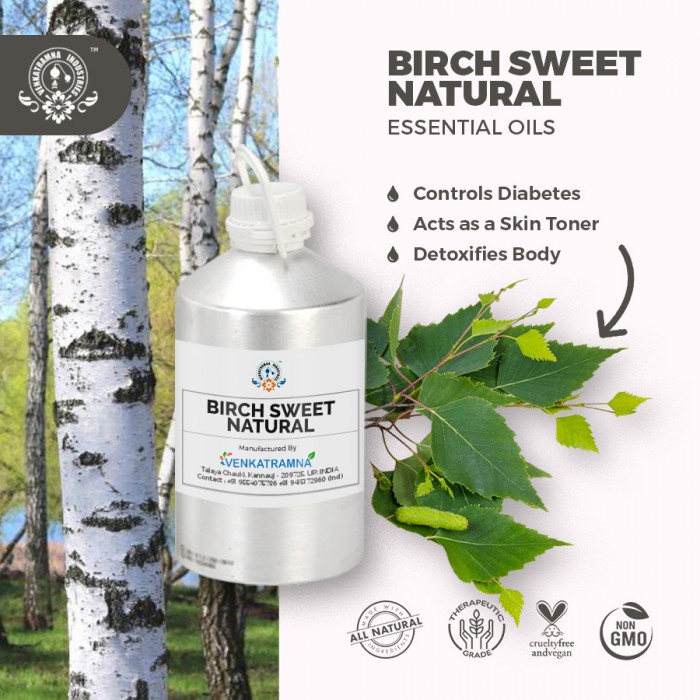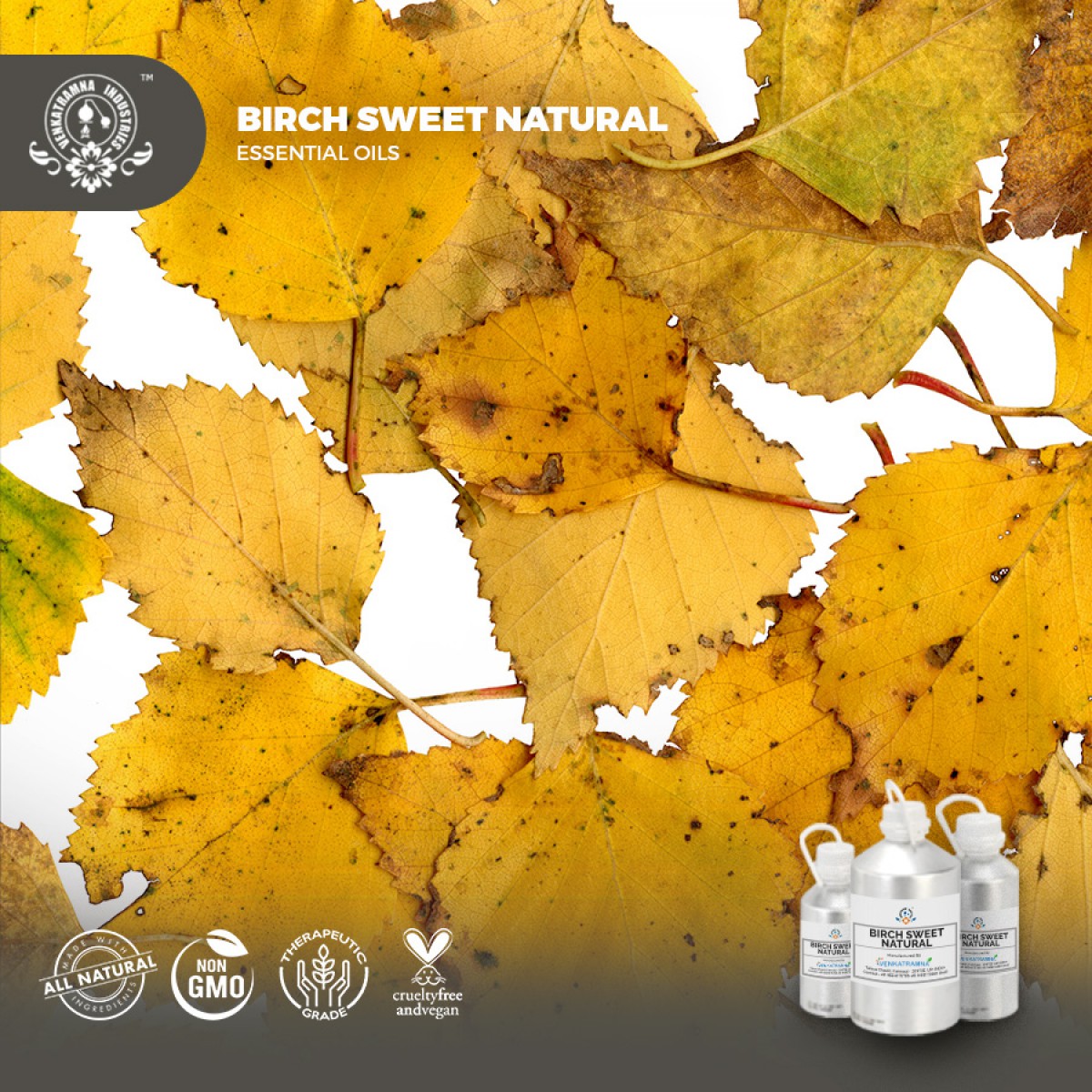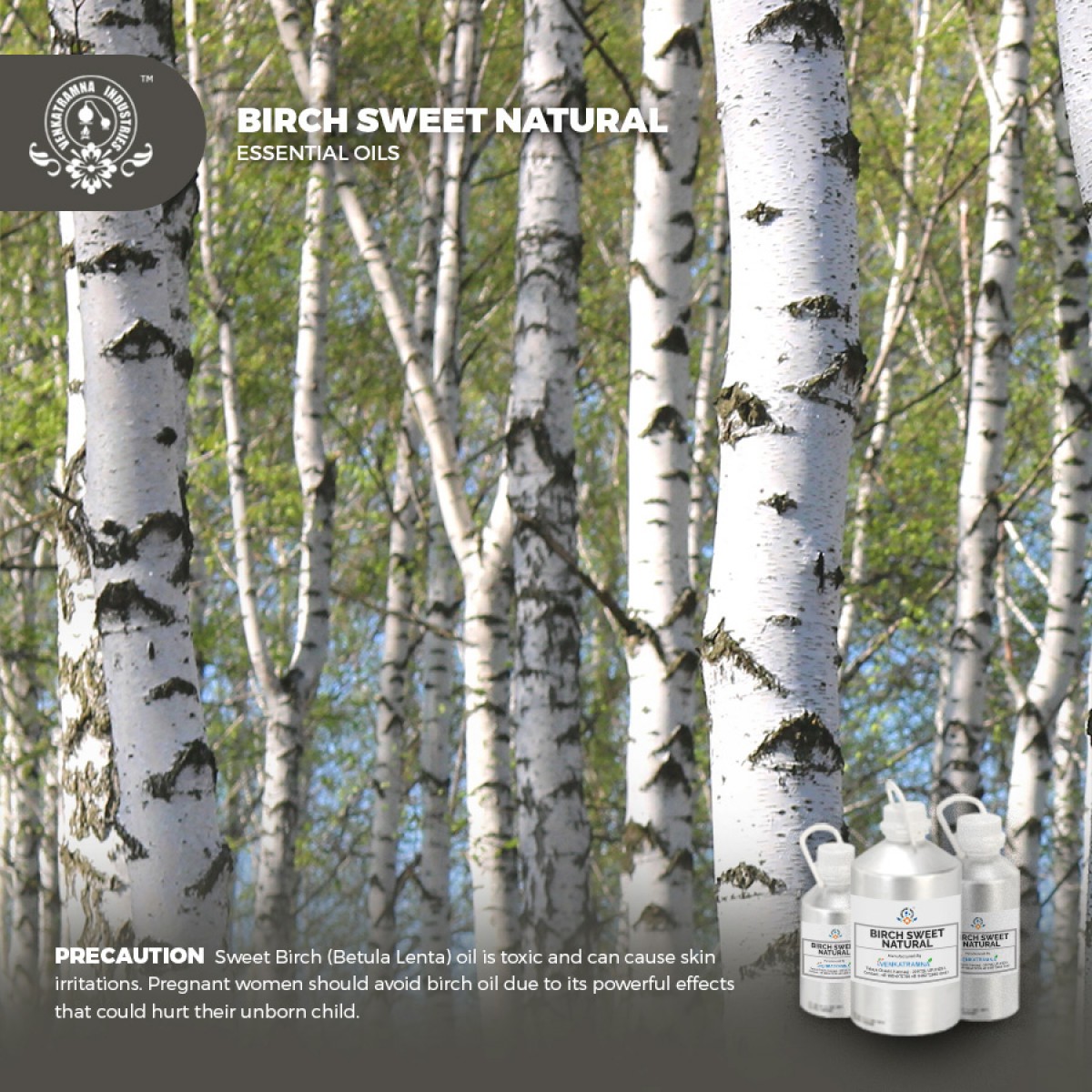Botanical Name: Betula lenta Common name: black birch, cherry birch, mahogany birch, s Read More
|
Botanical Name: |
Betula lenta |
|
Common name: |
black birch, cherry birch, mahogany birch, southern
birch. |
|
Plant family: |
Betulaceae |
|
Genus: |
Betula |
|
Appearance/Color: |
A thin, colorless to pale yellow
liquid. |
|
Odor: |
sweet, sharp, camphoraceous scent that is very
fresh and similar to wintergreen (smells like root beer), and offers a strong
top note in perfumery. |
|
Blends With: |
Blends
with sweeter citruses, herbs and woody oils, and
spice oils. |
|
Origin |
China |
Birch
essential oil (Betula lenta) is a rare and hard to produce oil created
from the steam distillation of the bark of the tree. Because of the challenge
to sustainably, safely, and frequently harvest, it’s difficult to find a
quality supplier of this oil. Many companies offer birch only seasonal and in
very limited quantities, or it’ll be diluted or of weaker potency.
The
birch tree is a graceful tree about 25m high, which has a pyramidal shape while
young. It has bright green leaves and a dark reddish-brown aromatic bark, which
his broken into plates or patches.
Barked birches in particular are cultivated as ornamental trees, largely for their appearance in winter. The Himalayan birch, Betula utilis, especially the variety or subspecies Jacque montii, is among the most widely planted for this purpose. It has been cultivated since the 1870s, and many cultivars are available, including ‘Doorenbos’, ‘Grays wood Ghost’ and ‘silver shadow’, ‘knights hayes’ has a slightly weeping habit.
DISCLAIMER
The complete range of conditions
or methods of use are beyond our control therefore we do not assume any
responsibility and expressly disclaim any liability for any use of this
product. Information contained herein is believed to be true and accurate however,
all statements or suggestions are made without warranty, expressed or implied,
regarding accuracy of the information, the hazards connected with the use of
the material or the results to be obtained from the use thereof. Compliance
with all applicable federal, state, and local laws and local regulations
remains the responsibility of the user.
The FDA has not evaluated the
statements on this website. No claims are made by Venkatramna Industries as to
the medicinal value of any products from vriaroma.com or by us. The information
presented here is for educating our customers about the traditional uses of
essential oils and is not intended to diagnose, treat, cure, or prevent any
disease. You are responsible for understanding the safe application of these products.
If you have any questions, please call or email us for further information.
As per NAHA guidelines, New Directions Aromatics
(NDA) does not recommend the ingestion of essential oils. It is imperative to
consult a medical practitioner before using Essential Oils for therapeutic
purposes. Pregnant and nursing women and those taking prescription drugs are
especially advised not to use this product without the medical advice of a
physician. The oil should always be stored in an area that is inaccessible to
children, especially those under the age of 7.
Birch essential oil properties are uplifting, aid in
calming inflammation, numbs pain, soothes spasms, cleanses
and purifies. Thanks to an active principle similar to cortisone,
it’s beneficial for bone, muscle, and joint discomfort as
well.
Birch essential oil in pharma
Birch essential oil has reported therapeutic properties that are
diuretic, astringent, a circulatory stimulant, a digestion aid,
benefits mood swings, antispasmodic, and antiseptic.
Essence
of Birch essential oil
Aromatically,
birch opens elevates, influences, and increases awareness in the sensory
system.
COMMON
USAGE
·
Prevents
bacterial and fungal infections
·
Control
diabetes
·
Reduce
pain
·
Relieves
symptoms of arthritis
·
Acts
as a skin toner
·
Detoxifies
body
·
Treats
skin diseases
·
Promotes
urination
Ingredients:
|
S.No |
Key Constituents |
Strength (%) |
|
1 |
Methyl salicylate |
90.4% |
|
2 |
Ethyl salicylate |
5.5% |
|
3 |
Linalyl acetate |
1.1% |
|
Specific
gravity |
1.160-1.195 20oC
1.181 |
|
Refractive
index |
1.523-1.543 20oC 1.5353 |
|
Optical
rotation |
-1.0o to +1.0o
20oC Compile |
|
Assay |
>99.0% |
Caution
Sweet
birch (Betula lenta oil due) oil is toxic and can cause skin
irritations. Pregnant women should avoid birch oil due to its powerful effects
that could hurt their unborn child.
TOXICOLOGICAL
INFORMATION
Safety summary
·
Hazards: drug
interaction; inhibits blood clotting; toxicity; high doses may be teratogenic.
·
Contraindications (all routes):
anticoagulant medication, major surgery, hemophilia, other bleeding disorders.
Pregnancy, breastfeeding. Should not be used on or given to children. Should
not be given to people with salicylate sensitivity.
·
Contraindications (oral)
gastroesophageal reflux disease: Maximum adult daily oral dose 182 mg
·
Maximum dermal use level 2.5%
Safety Advice
Oral and dermal
restrictions are based on a total of 95.9% total salicylate and methyl
salicylate and methyl salicylate limits of 2.5 mg/kg/day and 2.4%. oral use of
methyl salicylate-rich essential oils should be avoided in GERD, and salicylate
are contraindicated in children due to risk of developing Reye’s syndrome.
Essential oils with a high methyl salicylate content should be avoided in
pregnancy and location, and by anyone concurrently taking anticoagulant drugs.
Caution is advised in those with hypersensitivity to salicylates, or dermatological
conditions where the integrity of the skin is impaired.
Organ-specific
effects
·
Adverse skin reactions: undiluted sweet
birch oil was moderately irritating to rabbits and was irritating to both mice
and pigs; tested at 4% on 25 volunteers it was neither irritating nor
sensitizing. It is non-phototoxic.
Systemic effects
·
Acute toxicity (human) numerous
cases of poisoning have been reported from ingestion of wintergreen oil or
methyl salicylate, with a 50-60% mortality rate; 4-8 mL is considered a lethal
dose for child. Methyl salicylate could be 1.5-4.5 times more toxic in humans
than in rodents. In the years 1926, 1928 and 1939-1943, 427 deaths occurred in
the US from methyl salicylate or wintergreen oil poising. Common signs of
methyl salicylate poisoning are; CNS excitation; rapid breathing; fever; high
blood pressure; convulsions; coma. Death results from respiratory failure after
a period of unconsciousness. Methyl salicylate can be absorbed trans dermally
in sufficient quantities to cause poisoning in humans.
ECOLOGICAL
INFORMATION
·
Ecotoxicity: very toxic to aquatic environment.
·
Bioaccumulation: No data available
·
Mobility in soil: No data available
·
Persistence and degradability: No data available
·
Do not allow it into open water ways and
streams.





 MSDS-Birch_sweet.pdf
MSDS-Birch_sweet.pdf




